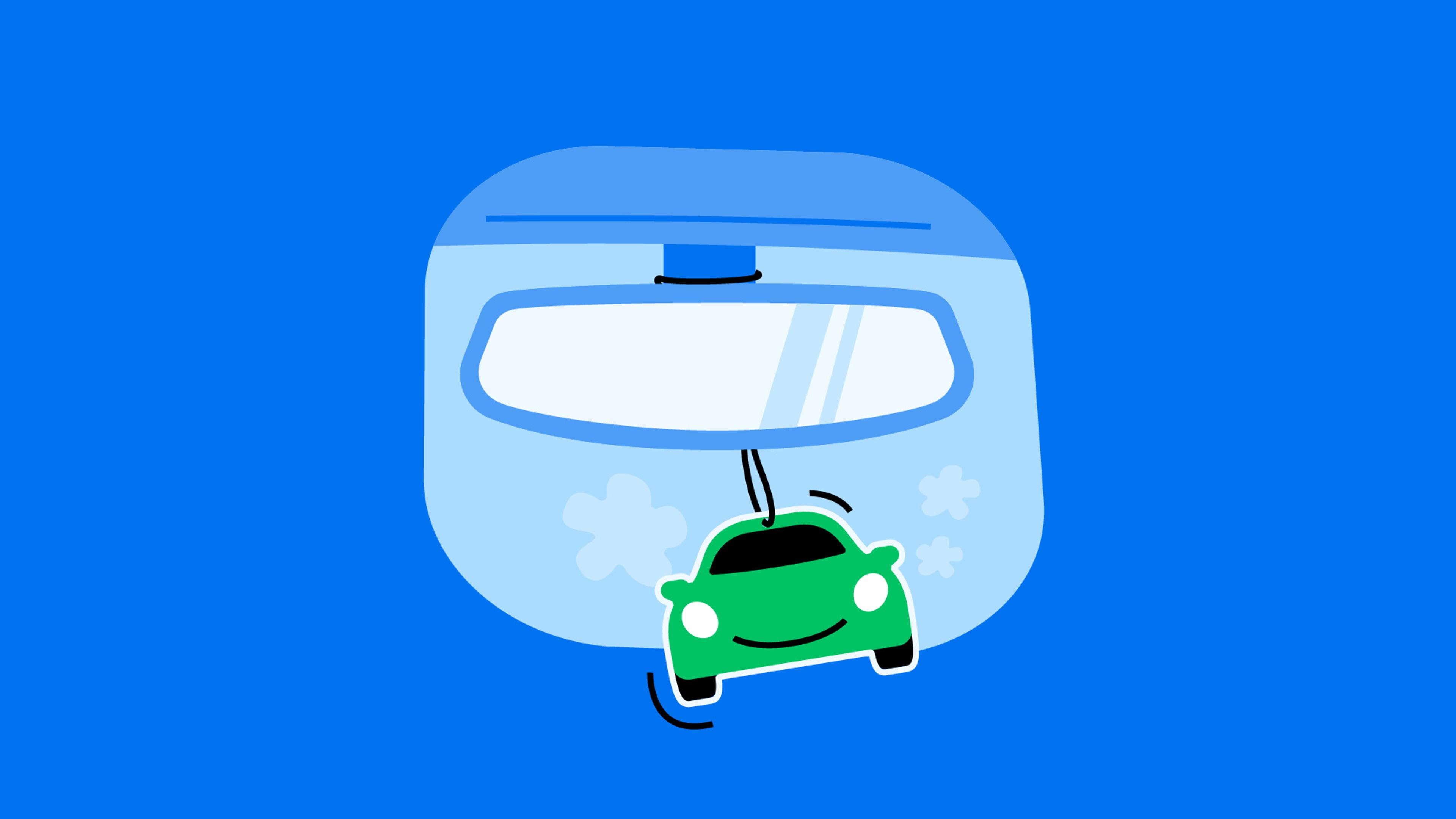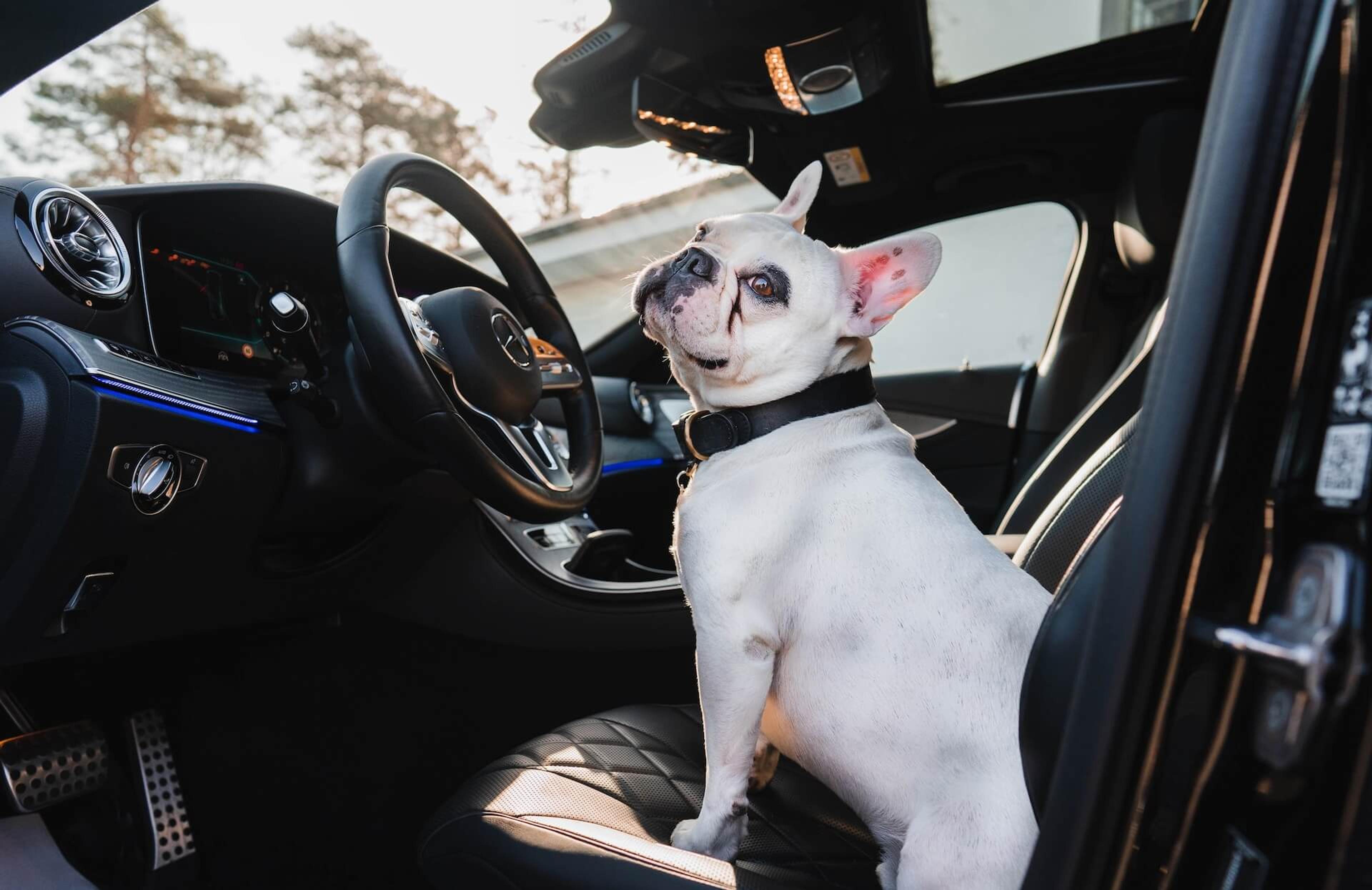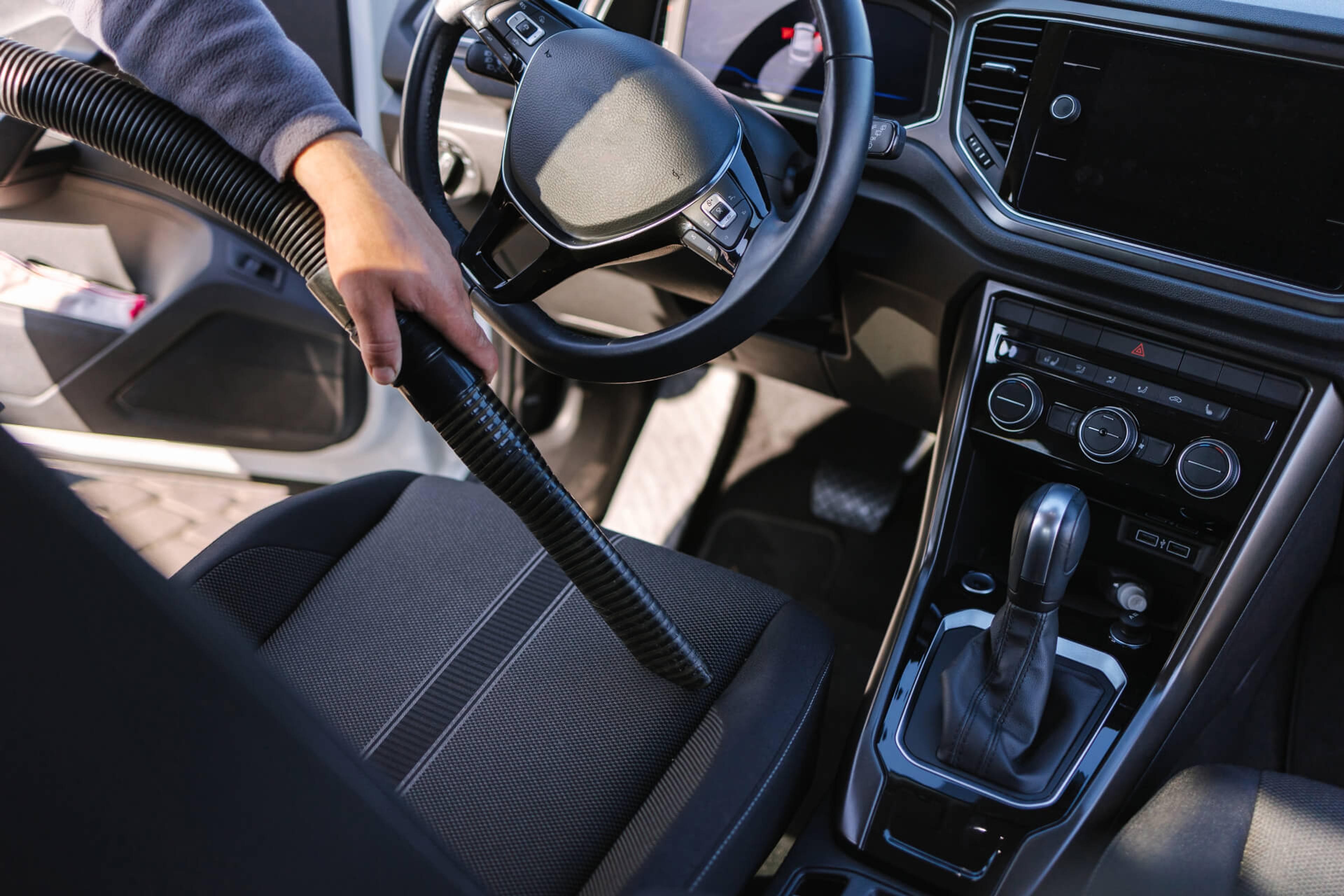
Ever stepped into your car only to be hit with a smell so pungent it could rival an unventilated cheese shop on a hot summer’s day? That can quickly turn even the most scenic drive into an aromatic adventure of questionable delights.
Be it yesterday’s takeout or a damp gym bag, car odors sneak into our lives when we least expect them. It’s enough to open the window to get rid of some of them, but others can require some practical knowledge and work.
In this post, you’ll learn how to get the smell out of your car using both professional-grade solutions and DIY hacks.

Used cars have dark secrets
Reveal them all! Just enter a VIN code and click the button:
Start by identifying the source of the odor
The first thing that you need to do once you smell something suspicious in your car is to find its source. This way, you will know the scope of the problem and can choose the best way to get rid of it.
You can start by looking for visible signs of spills and stains. Check under the seats, in cup holders, and around the edges of the floor mats. Pay more attention to tiny spots that can be easy to miss yet perfect for the dropped food to go bad unnoticed.
Some areas in your car are more prone to retaining odors, such as upholstery and carpets, air vents, cabin air filters, or trunk. For example, while seats can trap odors from spills or food, cabin air filters may contribute to unpleasant smells if they’re dirty or moldy. The latter may be more challenging to spot, so you’ll have to trust your nose on that.
If there are no visible signs of the problem and the bad smell is still lingering, it may be time to do some serious car interior cleaning and use time-tested methods of removing odors from your car.
Clean the car’s interior
Start by removing any obvious trash from the cabin, like food wrappers or empty bottles. Ensure nothing is left under the seats, in seat pockets, and in the center console, where we all like to put things for “throwing away later,” yet often forget.

Once there are no loose items in your car, continue the following steps:
1.Vacuum the interior. Using a car vacuum cleaner, ideally with a brush attachment, vacuum the carpets, upholstery, and floor mats. Pay attention to harder-to-reach areas where crumbs tend to accumulate.
2.Clean the upholstery. If you have fabric seats, use an upholstery cleaner on the entire seat and thoroughly brush it, removing stains and other dirt. Leather seats can be wiped down with a leather cleaner. Additionally, you can condition them to prevent cracking and drying out.
3.Clean air vents. Gently remove dust and debris from the vents using a small, soft brush. When the ventilation system is in use, accumulated dirt can contribute to unpleasant odors.
4.Wash floor mats. Take out the floor mats and wash them with soap and water. Before placing them back in the car, make sure they are dry to avoid moisture buildup.
5.Clean the trunk. Check if there are any items in the trunk that can emit the unwanted smell. Vacuum it out and clean dirt or spills, if any.
Don’t forget to ensure proper ventilation during and after cleaning so that cleaning product fumes can leave the car and everything dries out properly.
Check your car’s ventilation system
A malfunctioning ventilation system can significantly contribute to unpleasant odors in your car. It is primarily responsible for circulating fresh air effectively, and if something stops working properly, it can become a source of odors.
For example, if there’s an error in the ventilation system, it may not be able to remove moisture from the cabin. This can lead to a damp environment in your car, which is perfect for mold and mildew to grow. These organisms produce musty and stale odors, somewhat similar to how wet socks or decaying wood smell.
Air filters, responsible for trapping dust, pollen, and other particles, can also be the reason why your car stinks. If the air filter is clogged or not replaced regularly, this can lead to a buildup of bacteria or microbial growth, which you will smell as soon as the air starts blowing through it.
If you suspect your car’s ventilation system to be the problem and are unsure how to address these issues yourself, have the system inspected by a professional mechanic. They can diagnose any problems and make the necessary repairs to ensure your ventilation system continues to work properly.
When the issue is tobacco smell

Even if you don’t smoke in the car, this issue may be caused by the previous owner. The good news is that this odor is easy to identify, so you can start dealing with it right away.
Although challenging, there are some things that you can do. First, remove all traces of tobacco – this includes ashtrays, cigarette butts, or any other remnants of tobacco use.
Then, thoroughly clean your car, including vacuuming, cleaning the upholstery and carpets, and washing hard surfaces, such as the dashboard, door panels, and steering wheel. You can find many specific cigarette smoke removers on the market (sprays or mist), or you can make your own by mixing equal parts of white vinegar and water.
Keep in mind that you may need to repeat this a couple of times to get rid of the smell completely. If it’s you who smoke in the car, consider stopping, as it’s a stubborn odor that, when “nourished,” will become harder and harder to fight.
Tackling pet odors in your car
Pet odors are another odor category that requires patience and a systematic approach. While traveling with our furry friends is fun, the scents they leave behind are usually less fun to deal with.
How to clean a dog smell from your car
Before using any sprays or applying soap, get rid of all that fur that lies around in your vehicle. The easiest way to do it is to use a handheld vacuum or pet hair remover rollers if the problem is not so severe.
Next, try to find the root cause and aim directly at it. You have a couple of options for getting rid of the dog smell from your car’s interior:
- Use a DIY spray, for instance, the already mentioned vinegar-water mix, or look for other “recipes” online and find the one that suits you best.
- Apply commercial odor neutralizers that can absorb and destroy stench-causing molecules.
Once you’re done cleaning, leave the car windows open to allow fresh air to circulate and help remove any remaining odors.
To prevent this in the future, consider covering your car seats with washable dog seat covers or a blanket that’ll protect the upholstery and make it easier to clean up after your dog.

How do you get cat urine out of car upholstery
The key when dealing with car urine is to act fast – fresh stains are much easier to remove than old ones.
Whether you’re using natural remedies or commercial cleaners, the steps for doing this are more or less the same:
1.Blot the affected area. Use dry paper towels or a clean cloth to blot up as much urine as possible. Press down firmly without rubbing to avoid spreading the stain.
2.Spray the commercial or homemade cleaner on the stain. Let it sit there for 5-10 minutes.
3.Blot the area again. After applying the cleaner, blot the area with a clean cloth to remove the solution and the stain.
4.Repeat if necessary. If the odor is still present, repeat the process until you’re satisfied with the result. Cat urine can be particularly stubborn, and it may take multiple attempts to eliminate the smell.
It’s recommended to air-dry the seat after cleaning, as fresh air can help to get rid of remaining odors.
If the smell still lingers in your car despite your efforts, consider seeking professional upholstery cleaning services. They generally have access to specialized equipment and products that may be more effective.
Natural odor eliminators
White vinegar and water solution is one of the best natural cleaners you can make at home to remove odors from your car. Thanks to the chemical properties of vinegar, this mixture can help to dissolve mineral deposits, dirt, grease, and grime on a variety of surfaces (although it’s always recommended to test it in an inconspicuous area first).
There are some other things you can try, depending on the origin of the odor:
- Baking soda is one of the most popular choices when it comes to eliminating acidic odors, but it can work for many other types of odor as well. It works by neutralizing odor molecules and physically absorbing them. You can place an open box with baking soda in your car or sprinkle it on carpets (or the odor source) before vacuuming them.
- Coffee grounds. Similarly to baking soda, coffee grounds can help neutralize odors in the air quickly and naturally, thanks to the nitrogen that the coffee contains. Instead of throwing coffee grounds away after your morning ritual, throw them in a bowl and leave them in your car to eliminate unwanted smells.
- Activated charcoal is also known for its ability to absorb odors, therefore, you can place it in a bowl or wrap it in breathable fabric (or buy them ready) and leave a couple of bags in your car.
Enzyme cleaners for stubborn smells
For odors that are more stubborn and don’t surrender to natural odor eliminators, you can try enzyme cleaners. These are specialized cleaning products that break down organic matter and eliminate odors at a molecular level.
Enzyme cleaners contain biological molecules (enzymes) that act as catalysts to speed up chemical reactions. These molecules target proteins, fats, and other organic substances that cause odors, effectively neutralizing them. Therefore, enzyme cleaners can work well when removing pet urine, feces, and similar stains and odors.
Compared to some chemical cleaners, enzyme cleaners are safer and can be used on many surfaces, including carpets, upholstery, or clothing.
All cleaned up? Use aromatic solutions
Aromatic solutions will only be useful if you eliminate the cause of the smell. They can create a pleasant atmosphere and long-lasting effect in your car once it’s all cleaned up.

Essential oils and aromatherapy
Essential oils are a great aromatic solution for cars – they’re natural, easy to use, and you can choose from tons of different aromas.
If you’re using them at home, you need an aroma diffuser filled with water to help the smell spread around the area. For cars, there are more convenient solutions than this, so you should look for a special vent clip that comes with reusable felt pads.
Then, simply add a few drops of your favorite essential oil to the pad and clip it on the air vent – you’ll quickly feel the aroma spreading inside the car. Besides, it looks classy!
Aromatic car air fresheners
Generally, aromatic car air fresheners can come in various forms and use different mechanisms to release fragrances. For instance:
- Hanging cardboard or paper. These you can find in nearly any car as they’re the simplest air fresheners made of cardboard or paper infused with fragrance. They often come in different shapes and designs and are typically hung from the rearview mirror.
- Gel or solid air fresheners. These are containers filled with scented gel or solid fragrance blocks that you can place in various locations around the car.
- Plug-ins. Similar to household plug-in air fresheners, car plug-ins are devices that plug into the car’s power outlet and release fragrance through a fan or heating element.
- Sprays and aerosols. If you need a quick and targeted freshening, sprays can be the best option.
Choosing the right car deodorizer
Choosing the car deodorizer involves considering factors like personal preferences regarding smells, the type of odor you’re dealing with, the purpose of having a deodorizer in your car, and any sensitivities you or your passengers may have.
It’s also important to note that some air fresheners use synthetic chemicals, so if you prefer natural options, look for products that use essential oils or other natural ingredients.
Some fragrances like peppermint, rosemary, basil, or citruses (lemon, lime, grapefruit) can actually help with alertness and focus on the road. On the contrary, lavender, ylang-ylang, and other relaxing aromas might be better to use in the bedroom to help you sleep better.
The importance of regular car interior detailing
Depending on the scope, some odors can be almost impossible to clean and remove on your own. Hence, it’s important you take your vehicle for some professional car interior detailing once in a while.
Car interior detailing is a process during which the vehicle’s interior surfaces, including dashboard, seats, carpets, door panels, etc., are thoroughly cleaned and restored, improving or maintaining the overall appearance and condition of the cabin. Typically, it involves vacuuming, brushing, shampooing, sanitizing surfaces, cleaning windows and mirrors, and even adding a pleasant scent to the interior.

Doing it regularly may not only help to improve air quality and keep the car odorless but also preserve its value, prevent wear and tear, preserve upholstery and surfaces, and enhance your comfort while driving.
Some odors can indicate there’s something wrong with your car
Pets, spilled beverages, or forgotten food may not be the only cause of odors in your car. Many unusual smells can also be indicative of faulty systems or damage made to a vehicle.
For instance, a rotten egg smell can indicate a problem in the catalytic converter or exhaust system. If you notice a strong, burnt oil smell, it may be a sign of an oil leak or a problem with the engine. Even a sweet, syrupy odor can signal that something in your cooling system may be leaking. If you need clarification on the source of a particular smell, it’s recommended to have the vehicle inspected by a professional.
PRO TIP: If you notice any of those or other unusual smells when buying a used car and the seller can’t explain the source, be extra cautious. Get a vehicle history report to learn about past damages and potential weak spots in the car, and take the car to the service before sealing the deal. This will help you understand the actual condition of the vehicle and know what to expect from it in the future.

Check your VIN
Avoid costly problems by checking a vehicle's history. Get a report instantly!
Frequently asked questions

Article by
Renata Liubertaitė
Renata is a writer with over 8 years of experience in publishing, marketing, and SaaS companies. Writing in various fields and covering highly technical topics has taught her to turn complex things into something everyone can understand. When not writing for carVertical, she loves DIY projects and spontaneous bike rides.
